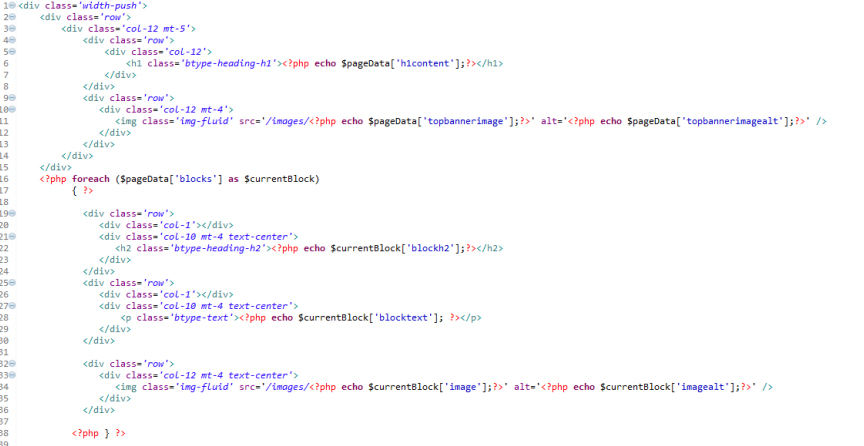

DISCLAIMER - Use the information on this webpage for broad guidance only and strictly at your own and your clients risk - Photon Flux and its directors and staff accept no liability
whatsoever for damages or loss as a result of you or any other person implementing any of this information on any website (either your own or that belonging to any other party).
By staying on this page and/or implementing anything you read on this page or any other page on this domain, you agree to hold harmless, Photon Flux and its directors and
employees. You also agree to accept full responsibility for any changes you make to any web resource, including websites, which cause loss or damage, including but not limited to
traffic volume and reputation. You should note that search engines have their own set of rules and algorithms and therefore this, and any other SEO resource
can never be 100% accurate as the algorithms are closely guarded trade secrets.
SEO short for Search Engine Optimisation, can mean slightly different things to different people. This is
because there is no industry standard in the way the optimisation of a website or webpage is implemented. Sure, there are rough edged guidelines which should definitely
be considered, but overall, there is no exact science behind SEO for the website owner, so there are no industry standards and therefore different people
conclude different factors to be of different levels of ranking importance - to an extent. To further compound the issue, SEO for a website of a given
topic (a), can have very different requirements than SEO for a given topic (b) - causing prices for the service to vary.
As time progressed away from the inception of online search engines, they changed their rules - content which would rank highly at one time for a given search term
due to it having the *SEO of the day methods* incorporated into its data and structure, was nowhere to be found once the rules changed. Again, we see any
opportunity for broad standardisation slipping away.
Despite all of the above, SEO persists, and CAN infact be given a definition which most people will accept, even though the way it is achieved, or at least
implemented can vary wildly!
SEO can therefore be quite accurately defined as being the ACT of structuring web content, web pages and websites (along with off-site factors) with the goal
of ranking higher in a search engine results page than competitor pages covering the same topic and targeting the same keywords. This is what this essential guide is all about.
Simples! Or to put it another way, doing the right things to outrank your competition.

There are lots of small tasks we can perform when developing a website or individual webpage which enhance the chances of a given webpage ranking highly for a
search term which people might be looking for. For example if searches are being performed for the words - learn seo - then we must use techniques which
enhance the page for that terms ranking potential on a search engine. These tweaks are numerous in number, some are current and some are old hat. Some are
known as "black hat" now and should be avoided at all costs, whilst new optimisation techniques appear fairly often and should be adopted.
As I have touched upon above, there are good and bad things you can apply to a page. Good - meaning they may or will help boost a pages ranking, Bad - meaning
that if a search engine like Google spots them, they may harm the ranking of the webpage. There are also the downright Ugly actions - which may end up with legal action
being taken in extreme cases but at the very least leave a bad feeling - these have generally been thought of as Ugly since before the year 2000!
I must re-iterate, as time moves on, it is important to note that techniques which are thought of as good or ok by the engines, may suddenly be switched to being bad
(to put it very simply). This is normally because once a given advantage providing method has been discovered by search engine optimizers (SEO's) at large, it generally
becomes abused and is no longer thought of as useful by those who create the ranking algorithms. At this point, the algo changes, and any search engine benefit
previously enjoyed by the page owner is removed, and in certain cases reversed - incurring a pushing down in rank rather than just a re-adjustment of the rank
having lightened the weighting applied to the method.
At the time of writing this, there is a lot of speculation on the internet between site owners as to whether guest posting links on blogs is going to be hit by some
kind of penalty, rather than just a devaluation, but this is an off site strategy and we will discuss this later on.

Lets take a closer look at some of the things we can do to our webpages which fall into one of the above categories. Not everyone will agree that every item below is within the correct category. This is because for some SEO companies or individual guru types, they see any tactic as fair game and are not concerned with their clients overall health in search, so long as they get their money - they will do whatever it takes. At a lesser extreme, there are people who genuinely believe that a given technique is absolutely fine as they have witnessed no examples of being "Google slapped" for it. Whereas others may believe a given tweak was what caused their rankings to tank. It is a VERY SUBJECTIVE area SEO and only the search engine in question can ever be 100% certain how applying a method will affect the position of a page as there are hundreds of ranking factors and some of these are thought to be heavily intertwined.

1. Put your keywords in the TITLE.
It is always a good idea to put your keywords (IE those words you are trying to rank for) in the TITLE tag of your webpage. But first of all do a search for your phrase, and you might
notice that the titles of the pages which are listed first don't contain the actual full string of words. For example, take the search phrase - how to write a webpage - go off and
search for it on Google and you will notice they don't just send a bunch of pages back which contain all the words in that order. They can be mixed up, or even not present in the title.
Our research has found that it is not very often that the exact term is present in the title tag of high ranking pages. Something to bear in mind. Hint : you will notice that
they return a lot of pages with the word "create" instead of "write". The title tag is still considered an important part of the SEO process, even though Google often shows
titles with different but related words to the search term.
Make your title enticing, remember that if it is displayed against 10 other titles, the user will naturally click on the one which appeals most to them.
2. Put your keywords in the DESCRIPTION.
The description tag sits in the head tag of a webpage as does the title. The description is usually the string of text shown as a the snippet in the search engine results page.
Google have discarded this though in some instances - and instead they will take text off the page which they, in their infinite wisdom, seem to think more appropriate. Use words
which you think the audience will be searching for, but twist them like google does with the title.
Again, as with the title, make the description interesting for your audience, ensure that it answers their query as best as possible in the space allowed. This way you are more
likely to get the click than your competitor with a less appealing description.
3. Use HTML Hx tags.
H tags - meaning Headings, are a way of segregating your document into different sub areas of text. Typically you will place an H1 tag at the top of a page, and arguably only one,
and then break down the page with H2, H3, H4, H5 sub headings. Nesting them as you would typically see on a white paper or instruction manual.
You can format and enhance your headings with CSS by either defining classes for them, or directly altering their properties against the actual tag itself.
4. Image naming and image ALT tags.
Place an ALT tag with each image. Make sure the image IS an image of what the tag describes, and make it relevant to the target phrase for the overall document, as there is
some speculation that search engines can now check this with image recognition software, although I have not seen any evidence of this. Either way, it makes good sense to help your
visitors by being accurate with the information you provide along with images, in case the image cannot be viewed.
When thinking of a file name for the image, include the words in it and space them out with a hyphen, "my-keywords-and-variations.jpg" for example. Our research shows very few
pages in the top 10 contain exact match phrases in their image names, so mix things up!
5. Look up semantically related keywords, and use them.
When you choose to write a page describing a product or service, you should always incorporate words which are semanically related to the keywords you are targeting. Here is an example.
If you are creating a page and you want it to rank for the phrase "how to rank a website", then it is expected that the page should include words like search engines, optimisation,
contextual, links, keyword density, headings, title etc.
Including these words ensures that the context of a webpage can be established, in particular for the more generic terms which can often have multiple meanings. Take "space" for
example. Words such as stars, orbit, rocket etc place the page within a specific context. Words such as office, desk or work, place it in another context, and so on, but both groups of words are
semantically related to stars.
Adding semantically related words will help the crawlers and indexers categorise your page correctly.
Most of this seems natural and to a writer above a certain calibre (which does not have to be master author!!) the inclusion of a LOT of these associated words and phrases occurs
automatically, however without research, even the master will often miss out on some golden nuggets!
Dont simply "sprinkle" these words randomly about the document, use them in headings and alt tags alongside the main keywords whilst retaining focus on the main target.
6. Research and use synonyms.
Surprisingly, the difference between synonyms and semantics is very often misunderstood.
Crazy as it may seem, many people think using synonyms of their target keywords is sufficient and semantics "dont matter" - this is wrong. However, to write a document
which contains few or no synonyms is quite easy to do, but many SEO's would argue a benefit of using them. One benefit is that they help spread the "load" on content by
preventing repetition of words, as in the following example.
Using the word "marketing" within a tutorial about online social media, a writer might incorporate the words "commerce, buying or retailing" instead of marketing where the
not so subtle changes in the context allow, rather than repeating marketing sentence after sentence. In this case, we have synonyms which are actually also
semantically related words. I.E. sure, marketing is related to retailing, but not ALWAYS interchangeable - only sometimes.
A more definitive synonym example is "rank" - "grade, level, position". These words are very easily interchangeable as they do not detract from "rank"
as much as "marketing" detracts from "retailing", therefore the context only has to be very subtly different to allow the writer to swap the words.
As a rule of thumb, the strongest synonyms are those which are the easiest to interchange. Semantically related words are often never interchangeable - but sometimes can be!
7. Optimize with emphasis tags.
Before the advent of widely used CSS providing new formatting methods for screen entities, raw html was used to enable basic text formatting. These original emphasis tags are
still widely used and many feel they still have an impact on the overall score of a page - albeit a small one. The main three to consider are the :-
BOLD whos syntax is <B>Optimized bold text</B>
UNDERLINE whos syntax is <u>Optimized underlined text</u>
ITALIC whos syntax is <i>Optimized italic text</i>
You can see how easy it is to emphasise your important text (the keywords) with these three different syntax options, they can also be nested to combine the effects together,
as demonstrated in the example below :-
BOLD UNDERLINE ITALIC whos syntax is <B><U><I>Optimized bold undlerline and italic text</I></U></B>
You typically use these within paragraphs of information or list items, rather than headings - as headings are preformatted under HTML or optionally CSS.
It is worth noting that CSS can also provide identical or similar effects if you wish to take that option - although as I mentioned, using the tags themselves arguably offers a boost.
8. Anchor text.
For links to pages which are both on and off your domain, placing your keywords in the anchor text is commonly considered a ranking factor. The key here, as was the case with
other tags, is to mix up the content. So if you are hoping/trying to rank for "web designers in stockport" - then consider anchor text such as "web design stockport" and "web design"
or "website design in stockport town". That sort of thing. Our study shows very few high ranking pages have the exact term in the "outbound" anchors on ranking pages.
You might ask yourself "why does anchor text to a different page help MY page to rank?" Well the answer is straightforward enough, if your page is about computer programming, and
you link to other high quality resources regarding the same topic, then that - in theory - should make your page more valuable to a reader, who can surf onwards to more information by
following the links.
9. Mobile Responsive Optimisation Techniques.
For a good few years it has been claimed that a mobile responsive website, which implements techniques to scale and adjust the layout of a page, depending on the screen size or
device being used to view the site will get a slight ranking boost over pages which do not incorporate such technology. In fairness, we have observed websites with no mobile
optimisation ranking very well for some highly competetive search terms.
This does not mean you should ignore this factor though, as a very high percentage of web traffic comes from searches perfomed on mobile devices such as phones and tablets.
So for the sake of your users (afterall, these are the people you are trying to attract) ensure your site is mobile friendly from the outset - do not settle for a new website design
if it is not mobile compatible. If you are in a position where you have an existing site which needs converting to accommodate mobile users, then update it as soon as possible.
10. Miscellaneous Search Engine Optimisation Techniques.
There are a few other on page techniques which are considered as useful for most pages.
a) Reduce your media size - make sure your images are compressed PNG files or JPG files. Try to achieve a balance whereby the images are small in byte size, but retain a level
of acceptable quality. This will make your pages load faster, and page load speed is indicated as a ranking factor.
b) Keep your description and title tags to a certain length. Search out the "current" ideal length for these two tags, there is no point in showing it here as it may change.
c) Make sure your main optimized content is "above the fold" - I.E. high up on the page and not pushed down by huge images or other less relevant content.
d) Keep ads to a minimum, your content should always be the priority, not your advertising.
e) Get links to your pages, and vary the anchors as much as possible whilst keeping most of them "on topic".
f) Ensure your headers contain the relevant and current JSON-LD information schema.
g) Place your name and address on each page in a footer - this is known as a NAP (Name and Address Profile). Make sure that ALL directory listings you attain contain EXACTLY the same
information as that which is shown on your site.

1. Avoid Keyword Stuffing.
For a long time people have been under the impression that repeating your keywords over and over again in their web page will make the page more relevant for those words. Google
put a stop to this nonsense many years ago due to repetition in the various important tags and page sections. There is an older metric which comes into play here whether or not
you read some guru saying it does not matter (it does). Keyword density - too high a percentage density of a given word or phrase in a document, by definition, means it is being
overused and therefore "stuffed". Dont do it. Instead, check the density of your keywords within documents which DO RANK. Establish a high to average density from the top 10 pages
and ensure the density on your page is around that value.
2. Do Not Bother with the Old Hidden Text Trick.
Can you believe it, web designers and site owners STILL, for reasons completely unknown try to use HTML tricks to hide text within the pages. 20 or so years ago this would have
fooled the search engine into thinking the page was full of great content which was visible to the user, except it wasn't, instead the user would be presented with a basic spam page
full of advertising and other drivel. There were a few different techniques used for this SEO trick.
a) HTML layers were used to block large sections of content from view.
b) The same colour was used for the background of the webpage as for the text. When text was displayed it could not be seen, but was still visible to the search engine so would be
included in the ranking calculations.
c) Both of the above could be achieved with standard HTML editors with no CSS, but also more involved CSS classes.
In summary - just don't try to hide your text, the search engine spider will see it - period.
3. Link Farms and Web Rings.
Networks of sites, often owned by different people, which are built purely for the purpose of linking to other sites in order to attain link juice should be avoided.
As a quick interlude - lets talk about link juice....
This is a value assigned by search engines which is largely based on the number of sites linking to a website. Originally called and measured as Page Rank, it is now discussed
in various different ways and you may see it referenced as DA (Domain Authority), PA (Page Authority), TR (Trust Rank) and others. Basically the term has become obfuscated and
in some cases abused, with various third parties claiming to be able to provide a measure which is useful as a potential comparison to the original Page Rank which was invented by Larry Page in the
1990's. These other measures can be useful - but can never really reflect exactly the way google determines a score on its own systems.
.....but back on topic, these link farms or web rings as they are often known, have also been associated with "bad neighbourhoods" - I.E. you do not want to be linking to, or getting links from any site in the group of sites
or neighbourhood, either type of link has the potential for putting your site right in there with the worst of them!
4. The Use of Irrelevant Keywords in your Optimisation Efforts.
You might ask yourself, well why the heck would anyone want to make an irrelevant web page? Well the answer is simply to get traffic. But there is an inherent problem here, if you
rank your page for words which are irrelvant to the topic the audience were searching for, then they will click away from your domain the second they realise they have been duped.
Consider writing a page about web design, which you manage to rank for home design. I can assure you, visitors will hit the back button before your javascript pop up even gets a
look in.
This can cause problems with your overall optimisation efforts, because your domain will accrue a poor bounce rate, and will lose score on that factor alone. Stay on topic and
lazer focussed to avoid discussing irrelevant issues.
5. Over-optimisation of Headings
The H tags mentioned earlier can be stuffed with your keywords whilst the overall keyword density remains relatively low. (By using the words in the H tags, but not mentioning them
in the paragraphs or other areas of the page). This imbalance of usage places too much emphasis on the headings (which are known to be a factor in page ranking) giving rise to a
downscoring or over-optimisation "penalty".
Also it is extremely important to note, our research has shown that you do not need to put an exactly matching phrase in the H tags to rank - instead it appears to be better to split up
the words within your target key phrase and spread them around the headings - perhaps mentioning the full phrase only once within a document H tag.
An example of this.....
Keywords "how to rank a website online"
h one tag = "Help with knowing how to get your website ranking online."
or
h one tag = "Improve the rank of your online website."
NOT
h one tag = "How to rank a website online"
These over-optimisation guidelines can actually be applied to any tag, such as the title or image alt text. So don't do it. If you want to see how a Google applies its own thinking to this, you
can get a hint just by looking at the titles and headings on documents which rank for the target phrase. It is quite rare to see exact matches present in all the tags.
6. Tiny Unreadable Text
There are almost no website owners left now who would even consider using this as a tactic. In the first instance, even a half baked anti spam filter can spot this within code a mile
off - the second reason is that even if it was missed, it would be picked up as unreadable text and would show as a fault in Google webmaster tools. Just avoid it like the plague.

1. Guest Posting for Links.
When bloggers came on the internet scene (as opposed to site owners with static content), the opportunities available for getting links to your site from on topic external domains
have increased exponentially. You see with traditional linking, it took a business owner to actively code the hardlink into the website, quite an effort for a none technical person,
so links were few and far between but they MEANT something. With the advent of blogs, came the opportunity for none programmers to post links up with virtually zero effort.
It wasn't long before blog owners realised they were sitting on a linking goldmine - and they started charging businesses for links from their blogs, to the business owners website.
A flurry of activity ensued with blogs throwing up signals they were taking payment for links, swiftly followed by Googles Matt Cutts saying "Guest Posting? Stick a Fork in It".
So we approach this from two angles. The first, as a blog owner, you may be tempted to sell links from your site, but be aware, that this is against googles terms and conditions, so
if you get caught out - you could lose any existing high rankings. The second is that you are aiming to increase rank and are tempted to purchase links. Go easy - because too many
and you are likely to get caught out. But also consider that if google decided to penalize a website because it had links pointing to it, this would open the door to what is known
as negative SEO, whereby competitors could buy a ton of links to a site and basically wipe it off the map. A very careful balancing act exists, and purchasing links, whilst ugly,
still seems to have the jury out on whether it's harmful or otherwise, with many theorizing that the worst that can happen for a buyer is that the links to their site are not counted
and money is lost but ranking remains. The choice is yours whether you want to engage in guest posting from either aspect.
3. Spinning Text
Possibly one of the ugliest methods of creating conent I have ever experienced. What happens is that there are programs online and off, which take a paragraph of text and "spin" it
to create new sentences. They do this by looking up words in a thesaurus or dictionary and then replacing words with those they find. Invariably this gives rise to terrible
content which looks like it has either been written by a five year old, or worse, and adult who simply can't string words together to form proper sentences.
You can generally see this a mile away, and so can a search engine. Whilst some pages of spun text get through the filters - many don't and are relegated to the bottom of beyond in
the serp - where they belong. A sure fire risk with no doubt at all.
3. Blog Comments SEO Spam.
These poor bloggers had it tough in the early days, with people coming to their blogs and posting comments containing links to all kinds of off topic affiliate and junk sites.
First of all the comments were blocked on the major blog platforms, then a certain search engine stopped giving credit to links in comments. Next thing you know the spammers
started to put the link in their name - as the comment poster you can sometimes do this on some platforms.
It wasn't long before the spammers got smart, and started using software to do their posts for them automatically. Scrapebox and others were used to crawl the web for target blogs
and once the blogs had been placed in a list and sorted, an auto post would run, spinning the comments and randomizing the link anchor text.
Even though these techniques were stamped out a decade or more ago, people for some reason still believe they can automate their comment spam and that it will bring them golden rankings.
Think again.
4. The use of Forums for Search Optimisation.
Forums per se have pretty much had their day now. Facebook groups, Twitter and various social media platforms have been a major cause of the demise of these specialized online
meeting places. People participating in link building to their sites immediately saw the benefit of having links on these forums and it wasn't long before forum owners started
locking their boards down and preventing links.
It's generally thought of as bad internet etiquette to place off topic advertising links on forums, however links do offer value to forum readers because they may be asking for help
and a link could guide them to the information they need. In our experience there is nothing harmful about having the odd forum link, and again, there is nothing to stop genuine
surfers linking to you, so if Google were to punish a site for having backlinks like these, it would be very easy for competitors to knock another domain out of the serp.
Be warned though - don't heavily spam them, and never only have forum links and nothing else pointing to your site.
5. Link Anchors Pointing to Pages on your Site.
An inbound link, otherwise known as a backlink for some silly reason (as it implies a two way link maybe?), is a link on the page of another domain which points to a page on your
domain. These links can use anchor text or can link from an image. Anchor text is the clickable text and it should be relevant to the page it links to. For example, if you want
your page to rank for the term "computers and the internet", you might want the anchor text to be exactly that. But don't do it - anchor text should vary with almost every link you
get to the page, because if you attain inbound links and the anchor is the same on all of them, you will get hit be a search engine slap down.
Instead of using the exact text, change it from link to link using examples such as this, "learn about computing and the web", "read more about the internet" and "your domain name". This applies to the
text in the paragraphs which surround the anchor text as well - ensure you don't end up with the same paragraph of text with a link to your site inside it on every page linking to you.
This extends into image ALT tags aswell, ensure the Alt text is different for most of the images linking in - because having them all the same would never happen in the random real
world of attaining natural links from related websites.
6. Automated Doorway Page Generators
Some SEO firms will tell you that its just fine to have a thousand pages on your site whereby the only thing which changes from one page to another is the target keywords. A strong
case for attempting this is whereby you need your site to rank for every town and village in your country, as the services you provide apply nationwide. For example, you might want visitors
who are searching for the words "car windscreen repair
we have seen websites completely destroyed in the SERPS for doing this - so if you must try it - only do so on a domain you are prepared to throw away once it gets penalised for having
duplicated / repeated content or is deemed as too thin to be of value to searchers.

Everything like the methods you read here is based on 20 years of search engine optimisation experience. Note that at the end of the day, whether something works or does not work can change overnight, so the best thing by far is to take it easy and use common sense. Most people know when they are doing something which is under handed or even not legal, just take a look at what the long standing high ranking sites are and take tips from them.